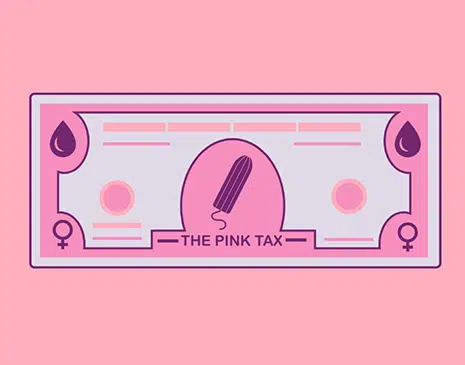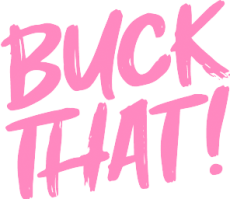The Pink Tax; sounds cute, right? Well, we can assure you it’s anything but. Let us explain.
Have you ever visited your local store and plucked a female-specific product from the shelves only to realise moments later that the male equivalent was cheaper? Yet this male-oriented product was no greater in form or function. In fact, the only differences were those of aesthetic value.
Welcome to The Pink Tax! A not-so-friendly gender-based pricing scheme targeting women who give a damn about their health, hygiene and appearance. And, the worst part is that women have been tolerating gender-based price discrimination their entire lives. So, we’re bringing the hidden costs of being a woman out of the shadows and providing some tips on how to avoid them. Y’all know you’ve been paying too much for far too long.
What is The Pink Tax?
To be clear; The Pink Tax is not an actual tax. It’s a discriminatory act of product pricing based purely on gender. We’re talking about products and services, like clothing, dry cleaning, car servicing, and most evidently, self-care goods (razors, shaving cream, deodorant etc.).
Let’s look at some examples:
(1) The Ralph Lauren classic polo. Retails at $129 for men, whilst women are paying an extra $30 for the same shirt made from less fabric.
(2) The infamous shaving cream scandal of our lifetime. Whilst men are copping a sweet deal of $7.49 a can, women are paying $7.99. That extra 50-cents for smooth legs is going to add up over the course of a year.
So, exactly how much does The Pink Tax cost women in Australia?
The Pink Tax may only seem like a few sporadic dollars here and there, but gender-pricing adds up over time, costing the average woman over $1,300 a year. $1,300 that’d be better spent on investments, a mortgage, a new car, or even a holiday would be fab.
And, that doesn’t include the other essential costs associated with being a woman. Essentials like period care, bras, contraception, make-up, waxing products, and pepper spray (a total necessity for the handbag, no?). When you consider that women earn only 77-cents to every dollar of their male equals, you really begin to wonder if women are being set up for financial failure here.
Why does The Pink Tax exist?
The Pink Tax exists as a profit-generating practice of companies taking advantage of an opportunity to make a little extra moo-lah from the female population (rude!). How are companies getting away with this? It all comes down to the societal expectations for women to look a certain way. Yes, this is still a lingering issue.
Women place a higher importance on self-care and appearance. There’s an ongoing pressure for women to conceal facial blemishes, disguise grey hairs, maintain perfect brows, and basically look picture-perfect 24/7. That’s a lot of pressure for a gal, especially when coupled with the 14% gender pay gap.
Is anyone else wondering HOW WE ARE STILL HAVING THIS CONVERSATION IN 2021?! It’s beyond.
How to avoid The Pink Tax
If you’re over giving your purse the third-degree at the check-out, thankfully there are some things you can do to avoid The Pink Tax:
- Beeline for the men’s aisle – If popping a few extra dollars into your savings account matters, bypass the women’s shelves and head straight to the men’s section. Your razors may not be coated in pink glitter and your bodywash may not be scented with a rare form of Moroccan rose from the depths of the Sahara, but your purse will super grateful for the detour.
- Support gender-friendly brands – Do some research and seek out brands that do price their products fairly. Those brands deserve your support and we are totally here for them!
- Shop strategically – Scope out when your favourite self-care products are on sale at the stores in your local area. When timing and savings permit, buy in bulk.
- Check unit pricing – When riding the neon-lit trolley highway, there’s normally only one number that catches your eye on the itemised price tags; the total price. If you look closely, there’s also a stack of other useful info, including the unit pricing. That is, the single unit price of the product you’re buying. This is the best way to scope whether you’ve caught on to a great deal. The total price can be completely misleading.
- Raise your voice – Feeling dissatisfied with a brand’s ethics when it comes to gender-pricing? Make some noise on the socials and let the world know. Encourage brands to do the fair thing. Who knows, you may just kick-off the next big social movement – go you!













